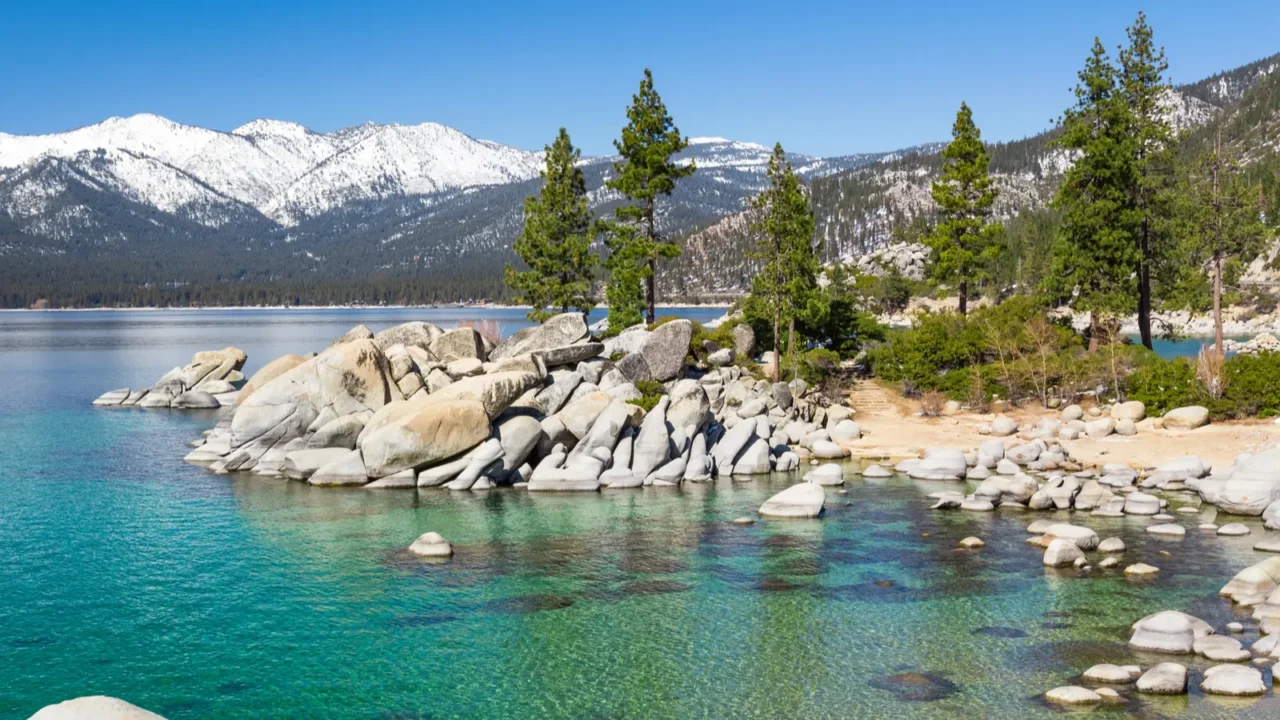
Introduction to Tahoe’s changing waters
The majestic Lake Tahoe region has held its reputation for crystal-clear water and breathtaking vistas for decades. But now the lake is showing clear signs of change as drought, warmer temperatures, and shifting snow patterns reduce water levels and clarity.
Curious visitors and residents alike are asking what this means for travel, nature, and the future of a beloved destination. Let’s dive in!
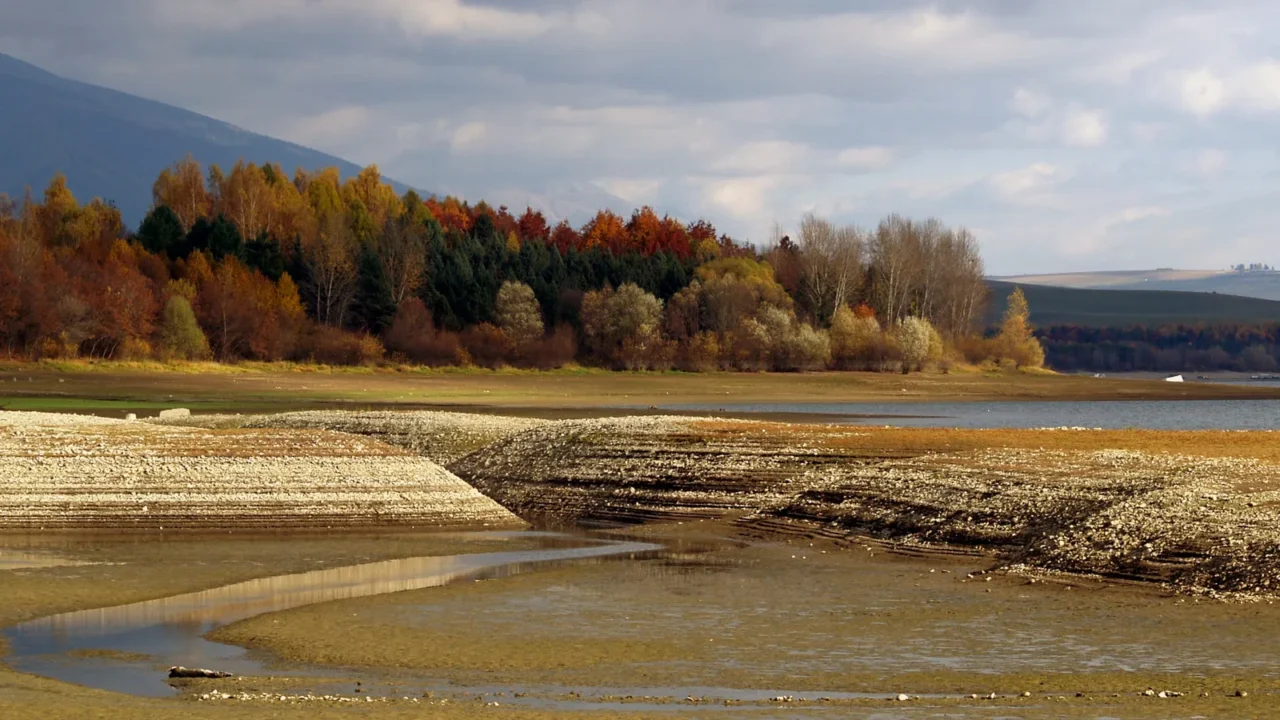
The lake’s water level slide
As of 2025, Lake Tahoe’s water level dropped to its lowest point in four years, according to the UC Davis Tahoe Environmental Research Center, exposing dry coves, closing boat ramps, and altering the shoreline’s familiar shape. The shift has made plain that even iconic U.S. landscapes are not immune to prolonged dryness and climate pressures.
Visitors who remember full waters and deep blue expanses are noticing a different scene now.

Clarity under threat
One of Lake Tahoe’s defining features has always been its shimmering clarity and vibrant blue-green hues. But warmer surface waters, reduced mixing, and increased sediment and nutrients are eroding that clarity steadily over time.
For eco-travelers drawn by pristine views, this trend raises real questions about what “natural beauty” means in a changing environment.

Drought and snowpack shifts
The lake depends on snow-dominated runoff from the Sierra Nevada, but increasingly precipitation arrives as rain or melts earlier, reducing stored water in summer. That change shortens seasonality, affects lake levels, and challenges the notion of stable spring and summer travel windows.
For travelers planning a visit, it means the classic shoreline images may be less reliable than in the past.
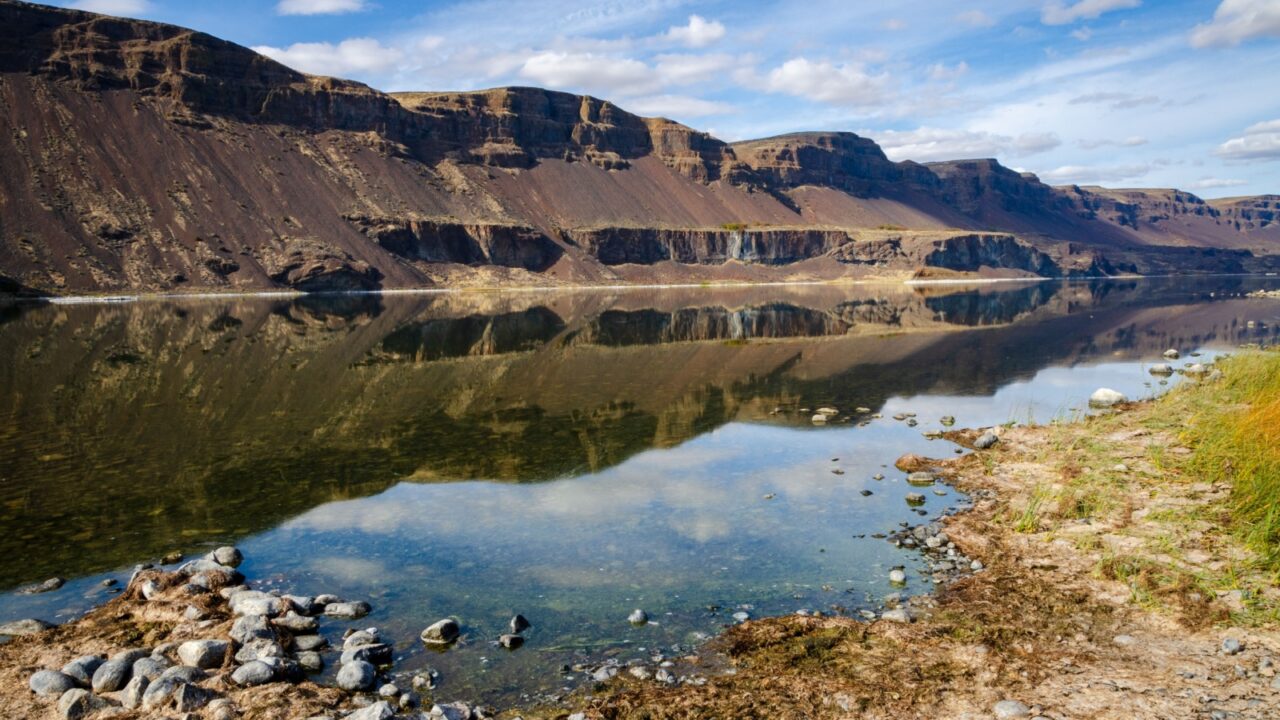
Ecological ripple effects
Lower water levels and warmer temperatures not only change views, but they also affect the ecosystem beneath the surface. The lake is seeing impacts such as weaker stream flows, shifts in near-shore algae growth, and threats to native species that depend on cool, deep water.
For travelers interested in nature and wildlife, the message is clear: conditions are evolving, and the lake you remember may be different.
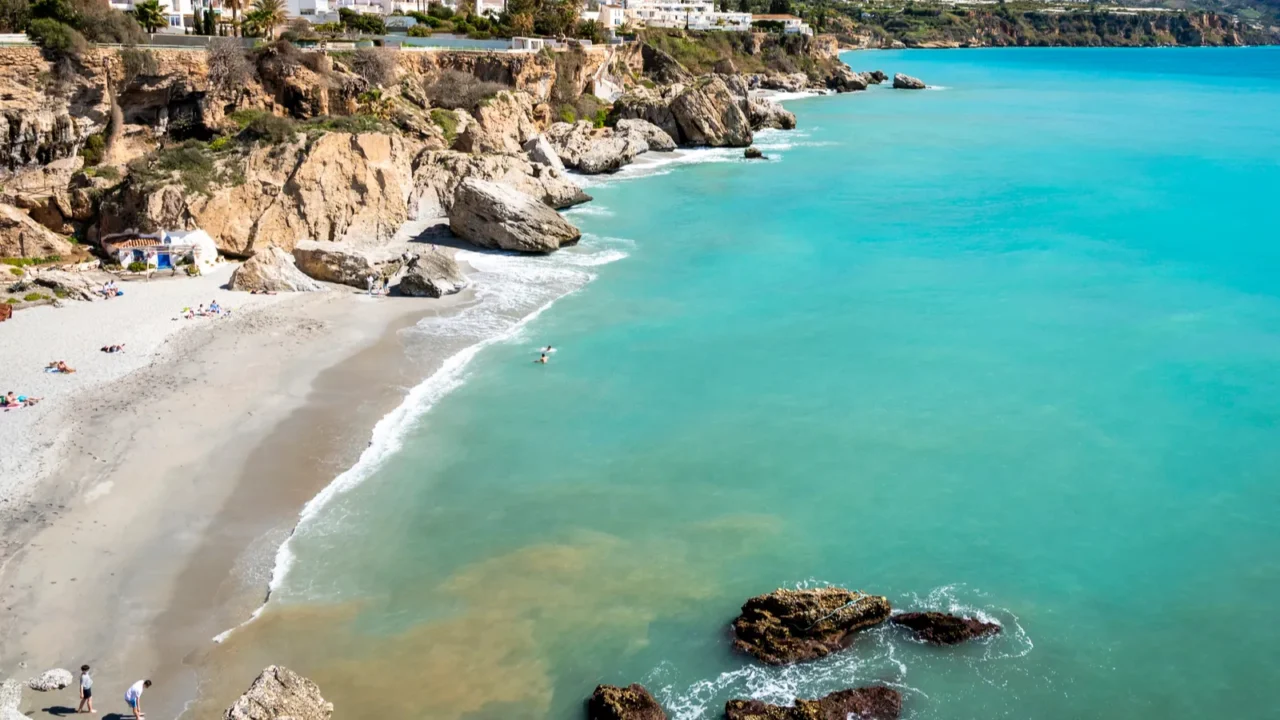
Visitor experience evolving
Travelers arriving at Lake Tahoe now might notice changed conditions: beaches a little narrower, boat ramps a little further in, maybe fewer deep-water vistas than before.
The infrastructure and services are still strong, but the natural backdrop is shifting. That means the visitor experience is evolving, not necessarily worse, but different.

The eco-travel debate emerges
With the lake’s health visibly changing, a debate is unfolding among travelers, locals, and conservationists over how tourism should respond. Organizations such as the League to Save Lake Tahoe promote responsible tourism as a means to support restoration, while others warn that high visitor volumes may still strain the lake’s ecosystem.
This conversation matters for anyone planning a trip: Is it enough to show up, or should travelers engage differently? It raises the question of what responsible tourism looks like when nature is under stress.

How local communities respond
Local communities in the Lake Tahoe region are rallying around both adaptation and protection: restoration projects, watershed management, and visitor education are all on the table. Agencies like the Tahoe Environmental Research Center and the Tahoe Regional Planning Agency are actively working to improve water clarity, manage sediment, and reduce harmful runoff.
Visitors who engage respectfully with these efforts help make a difference and can enjoy a richer travel experience. Supporting local businesses that invest in sustainability, choosing off-peak seasons, and respecting nature’s limits are becoming part of the new travel mindset. For visitors, that means the trip can carry more meaning beyond simply seeing sights.

What travelers should know
Travelers planning a visit to Lake Tahoe should consult up-to-date reports on lake levels and boat ramp access from local agencies like TRPA and the U.S. Forest Service. It’s sensible to choose rentals, tours, and lodging that demonstrate environmental awareness or investment in local conservation. Being flexible, informed, and respectful helps ensure the visit aligns with the evolving region.
Also, travelers should consider timing: earlier or later in the season may show more water but also more variability. Thoughtful travelers may treat the visit as part of the story of change rather than just a snapshot of the past. That mindset helps deepen the travel experience.
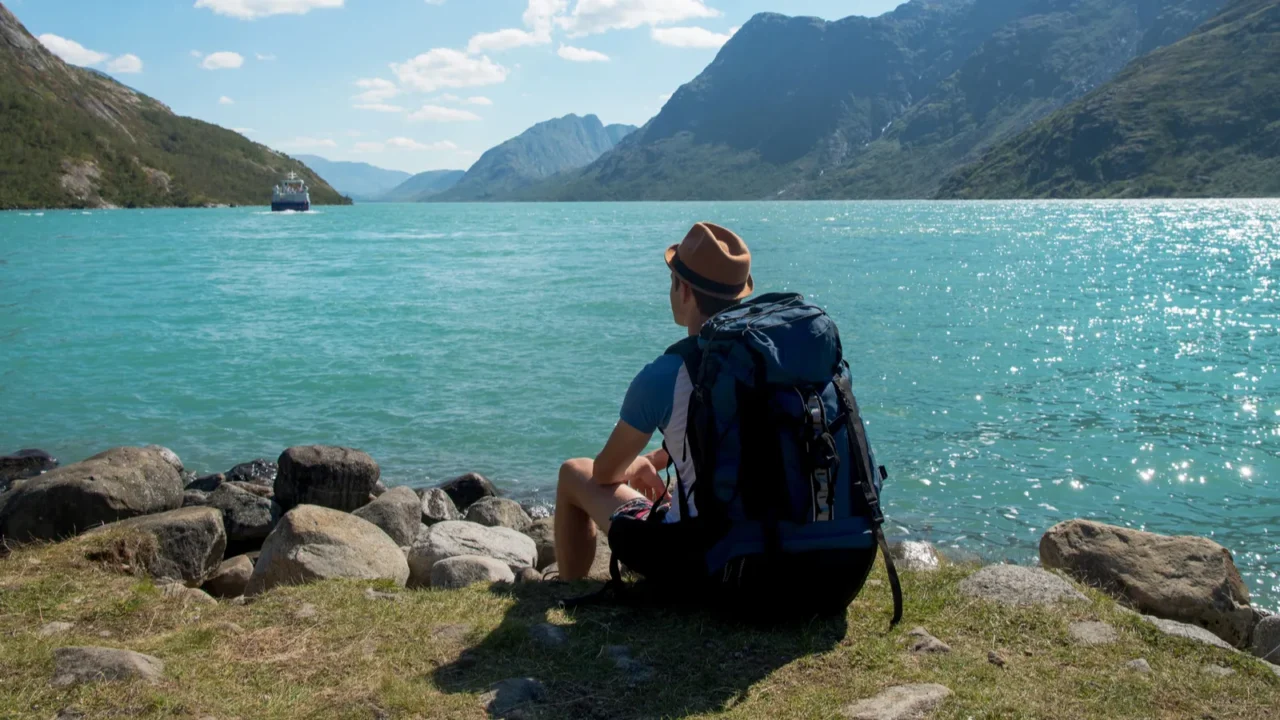
Supporting sustainable tourism
Sustainable tourism isn’t a slogan; it’s a practical way to support Lake Tahoe’s future. Choosing operators that minimise impact, following posted ecological guidelines, staying on established paths, and reducing water use helps protect the destination’s resilience. Travelers who embrace this approach become part of the solution, not just spectators.
Tourism dollars can fuel protection if they flow thoughtfully: local restoration, watershed programmes, and visitor education all benefit. Travelers who ask questions, choose well, and treat time in Lake Tahoe as both adventure and stewardship add value. That kind of travel shifts from “see it” to “support it.”

Looking ahead for the lake
Lake Tahoe’s future isn’t predetermined; it depends in part on choices by communities, policymakers, and yes, visitors. Rain, snow, wildfire, human impact, and atmospheric changes all play roles, so the next decade matters. For travelers, the opportunity is to witness a place in transition, but also to travel with intention.
The evolving landscape of Lake Tahoe reminds us that iconic places aren’t frozen in time; they’re responsive to change. That means future visits might differ in nuance, but can still be rich, meaningful, and beautiful. Travelers who arrive aware, humble, and engaged will gain more than just views; they’ll form connections.

Reflections on Tahoe’s future
Lake Tahoe’s drought story is more than a regional concern; it’s a reflection of wider climate patterns shaping America’s landscapes. The shrinking waters highlight how tourism, environment, and responsibility intersect in real time. For visitors, it’s a reminder that travel isn’t just about seeing, it’s about preserving what’s seen.
Scientists and local leaders continue to monitor the lake’s health and search for a long-term balance between recreation and conservation. Each traveler who visits with awareness adds to the momentum for protection. And for those craving more scenic adventures, explore the ultimate summer road trip through New York’s Finger Lakes for an unforgettable eco-inspired journey.

A new chapter for Tahoe
Lake Tahoe’s shrinking waters and changing clarity are more than environmental headlines; they are challenges to how travel, nature, and community intertwine. Visitors can still enjoy beauty, outdoor activities, and alpine magic, but the context is shifting. The best destinations are those where travelers appreciate the full story, nature, change, and connection.
Looking for your next scenic escape? Discover the dreamiest lakes in Minnesota where tranquility, beauty, and adventure meet.
What do you think? Does Lake Tahoe capture your attention as a travel destination that invites respect and discovery? Drop your thoughts in the comments.
Read More From This Brand:
- Montana’s toxic beauty, the lake that kills and captivates
- Scenic Michigan lakeshore drives to take this September
- Arizona’s stunning yet polluted lake still draws adventurers
Don’t forget to follow us for more exclusive content right here on MSN.
This slideshow was made with AI assistance and human editing.